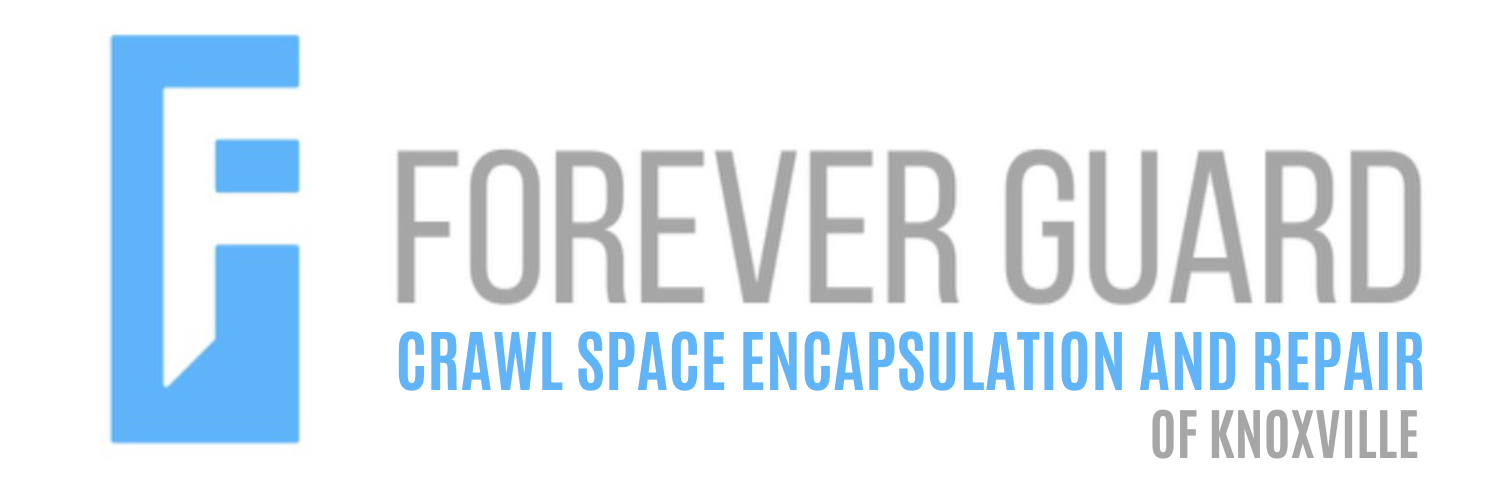Now IS THe Time To...

Crawl Space Services In Knoxville, TN
Stetson Howard: 865-432-6743
CRAWL SPACE ENCAPSULATION, REPAIR, WATERPROOFING & MOLD REMOVAL
No-Obligation, Free Inspections
No-Obligation Free Estimates
We Warranty All of Our Work
100% Satisfaction Guaranteed
In regions where the specter of flooding looms large, the installation of a sump pump stands as a beacon of defense, protecting the sanctity of homes and the well-being of those who dwell within. This essential guide delves into the pivotal role sump pumps play in flood-prone areas, not merely as a measure of damage control but as a proactive strategy to mitigate the risk of water intrusion. The decision to install a sump pump transcends convenience, embodying a commitment to safeguarding one's home, possessions, and peace of mind against the unpredictable forces of nature.
Flooding can strike with little warning, transforming a serene abode into a battleground where homeowners must contend with the elements. In these critical moments, a sump pump serves as the first line of defense, actively diverting water away from the foundation and living spaces, thus preventing the accumulation that leads to flooding, structural damage, and the proliferation of mold and mildew. The importance of this installation cannot be overstated, as it not only protects the structural integrity of the home but also preserves the health and safety of its inhabitants.
This guide aims to illuminate the multifaceted benefits of sump pump installation, offering insights into how these systems work, the various types available, and the considerations homeowners must weigh to select the most effective solution for their needs. Whether you're a seasoned homeowner familiar with the challenges of living in a flood-prone area or new to navigating the complexities of water management, understanding the critical role of sump pumps in flood mitigation is essential.
As we explore the nuances of sump pump installation, from assessing your home's vulnerability to water intrusion to the technical considerations of installation and maintenance, our goal is to empower you with the knowledge and confidence to make informed decisions. By embracing the proactive approach of sump pump installation, homeowners can significantly reduce the risk of flooding, ensuring that their homes remain dry, secure, and resilient in the face of nature's unpredictability.
Understanding the Risks in Flood-Prone Areas
For many homeowners, the threat of flooding is a constant concern, particularly in areas known for their vulnerability to water inundation. Understanding the common causes of flooding and its potential impact on homes is crucial for implementing effective flood mitigation strategies. This section delves into the various factors that contribute to flooding in certain areas and discusses the significant damage flooding can inflict on homes, underscoring the importance of taking proactive measures, such as sump pump installation, to safeguard your property.
Common Causes of Flooding
Overview of Factors Contributing to Flooding in Certain Areas (e.g., Heavy Rainfall, Proximity to Water Bodies)
Flooding can occur for a multitude of reasons, each posing a unique threat to homes in affected areas:
- Heavy Rainfall: One of the most common causes of flooding, intense and prolonged rainstorms can overwhelm natural and man-made drainage systems, leading to water overflow that can inundate homes.
- Proximity to Water Bodies: Homes located near rivers, lakes, or oceans are at increased risk of flooding due to rising water levels, storm surges, or breaches in levees and dams.
- Rapid Snowmelt: In colder climates, a rapid thaw can release large volumes of water in a short period, exceeding the capacity of the ground to absorb it and leading to potential flooding.
- Poor Drainage Systems: Inadequate or clogged drainage systems in urban areas can lead to water buildup during heavy rains, increasing the risk of flooding for nearby homes.
Impact of Flooding on Homes
Discussion on the Potential Damage Caused by Flooding and the Importance of Proactive Measures
The impact of flooding on homes can be devastating, both structurally and financially:
- Structural Damage: Flooding can weaken a home's foundation, cause cracks in walls and floors, and damage the overall structure, leading to costly repairs.
- Mold and Mildew: The presence of standing water creates an ideal environment for mold and mildew growth, posing health risks and requiring extensive cleanup efforts.
- Property Loss: Personal belongings, furniture, and electronics can be severely damaged or destroyed by floodwaters, resulting in significant financial loss.
- Decreased Property Value: Homes that have experienced flooding may see a decrease in property value and may be more challenging to insure or sell.
Given these risks, taking proactive measures to mitigate the impact of flooding is essential for homeowners in flood-prone areas. Installing a sump pump system is a critical step in protecting your home from water damage by actively removing water before it can accumulate and cause harm. By understanding the common causes of flooding and its potential impacts, homeowners can better prepare and implement effective flood mitigation strategies, ensuring their homes remain safe and dry regardless of the weather conditions.
The Role of Sump Pumps in Flood Mitigation
In the battle against flooding, particularly in areas prone to such natural disasters, sump pumps emerge as unsung heroes, quietly safeguarding the sanctity of homes. This essential component of home water management plays a pivotal role in preventing water damage and preserving the structural integrity of properties. Through an exploration of how sump pumps work and their benefits in flood-prone areas, homeowners can gain insights into the critical importance of these devices in their flood mitigation strategies.
How Sump Pumps Work
Basic Mechanics of Sump Pumps and Their Function in Removing Excess Water
At its core, a sump pump is ingeniously simple in design yet powerful in action. Installed in the lowest part of a basement or crawlspace, in a specially constructed sump pit, the sump pump springs into action when water levels rise, activating through a float switch mechanism. As water accumulates in the pit, the pump's motor turns on, propelling water away from the home through a discharge pipe. This process effectively prevents water from reaching critical levels that could lead to flooding, channeling it instead to a designated drainage area away from the property.
Benefits of Sump Pumps in Flood-Prone Areas
Explanation of How Sump Pumps Can Help Prevent Water Damage and Protect the Home's Foundation
The installation of a sump pump in flood-prone areas offers numerous benefits, making it an indispensable tool for homeowners:
- Water Damage Prevention: By actively removing water that accumulates around the foundation, sump pumps prevent the ingress of water into basements and crawlspaces, safeguarding belongings and preventing costly repairs.
- Foundation Protection: Consistent water accumulation can weaken a home's foundation over time, leading to structural issues. Sump pumps help maintain the integrity of the foundation by keeping the surrounding soil dry and stable.
- Mold and Mildew Reduction: By keeping basements and crawlspaces dry, sump pumps mitigate the risk of mold and mildew growth, which can pose health risks and lead to unpleasant odors.
- Increased Property Value: Homes equipped with effective flood mitigation systems, including sump pumps, are often more appealing to potential buyers, potentially increasing property value and making the home easier to insure.
In flood-prone areas, the role of sump pumps extends beyond mere water removal; they serve as a critical line of defense in protecting homes from the myriad challenges posed by water intrusion. By understanding the mechanics of how sump pumps work and recognizing their benefits, homeowners can make informed decisions about incorporating these devices into their flood mitigation plans, ensuring their homes remain dry, safe, and secure regardless of the weather conditions.
Selecting the Right Sump Pump for Flood-Prone Areas
For homeowners residing in areas frequently threatened by flooding, choosing the right sump pump is not just a matter of convenience—it's a critical decision for safeguarding their property against water damage. The right sump pump can mean the difference between a dry basement and costly flood damage. This section outlines essential factors to consider when selecting a sump pump and highlights features that are particularly beneficial in high-risk flood areas, ensuring homeowners are equipped to make informed decisions tailored to their specific needs.
Factors to Consider
Guidelines for Choosing a Sump Pump Based on Capacity, Power Source, and Durability in Harsh Conditions
When navigating the market for a sump pump, several key factors should guide your selection:
- Capacity: The pump's capacity, measured in gallons per hour (GPH) it can move, should align with your home's water management needs. Consider the highest water levels historically observed in your area and choose a pump that can handle an even greater volume to ensure preparedness for extreme conditions.
- Power Source: Most sump pumps are electric, but in areas prone to power outages during storms, considering a pump with a battery backup or dual power sources (electric and water-powered) is crucial to maintain operation when it's most needed.
- Durability: Look for pumps constructed with materials that can withstand harsh conditions, such as cast iron or stainless steel, rather than plastic. The durability of the pump is paramount in ensuring it can perform under the stress of heavy rainfall and flooding.
Features Essential for High-Risk Areas
Discussion on Features Like Battery Backup, High-Capacity Pumps, and Alarms That Are Particularly Beneficial in Flood-Prone Areas
In addition to the basic considerations, certain features become indispensable in areas with a high risk of flooding:
- Battery Backup: A sump pump with a battery backup ensures that your pump remains operational during power outages, providing continuous protection against rising water levels.
- High-Capacity Pumps: Opting for a high-capacity pump is advisable in flood-prone areas to ensure that the system can handle sudden influxes of water during severe weather events.
- Alarms: Modern sump pumps often come equipped with alarms that alert homeowners when water levels are rising unusually high or if the pump is not functioning correctly, allowing for quick intervention before flooding occurs.
- Automatic Operation: Pumps with automatic activation and deactivation based on water levels provide hands-off operation, ensuring that the pump runs only when necessary, which is especially useful during unpredictable flooding events.
Installation Considerations in Flood-Prone Areas
For homeowners in areas susceptible to flooding, the installation of a sump pump is a critical measure to prevent water damage. However, the effectiveness of a sump pump is significantly influenced by the thoughtfulness of its installation, particularly the location of the pump and the configuration of the discharge system. This section provides valuable tips for determining the optimal location for your sump pump and guidelines for ensuring proper water discharge, ensuring your home remains dry and protected even in the face of severe weather.
Determining the Optimal Location
Tips for Choosing the Best Location for Sump Pump Installation to Maximize Water Removal Efficiency
Selecting the right location for your sump pump is paramount to its effectiveness in removing water from your property. Consider the following tips:
- Lowest Point: Install the sump pump at the lowest point of your basement or crawlspace, where water naturally collects. This ensures the pump can efficiently remove water before it spreads.
- Near a Power Source: Ensure the chosen location is near a reliable power source but avoid using extension cords as a permanent solution, as they can pose safety hazards.
- Accessible for Maintenance: While the pump should be optimally placed for water removal, it also needs to be accessible for regular maintenance, inspections, and potential repairs.
- Away from Exterior Walls: Placing the pump too close to exterior walls may lead to quicker wear from external moisture and cold, especially in climates with freezing temperatures.
Ensuring Proper Water Discharge
Guidelines for Setting Up a Discharge System That Effectively Directs Water Away from the Home, Considering Local Terrain and Regulations
An efficient discharge system is crucial for directing water away from your home's foundation effectively. Follow these guidelines:
- Discharge Away from the Foundation: Ensure the discharge pipe directs water at least 10-20 feet away from your home's foundation to prevent recirculation of water back into the sump pit.
- Consider the Terrain: Take into account the slope and general terrain of your property. The discharge point should utilize gravity to aid in water flow away from your home.
- Comply with Local Regulations: Before installing your discharge system, check local building codes and regulations regarding water discharge. Some areas have specific requirements on where and how water can be discharged to protect community water management systems.
- Use of Check Valves: Install a check valve in the discharge line to prevent water from flowing back into the sump pit after the pump shuts off, ensuring efficient operation and reducing the risk of flooding.
Considerations for All Foundation Types
Extreme weather events pose a significant threat to homes in flood-prone areas, making the preparation of sump pump systems a critical aspect of home maintenance. Ensuring the continuous operation of your sump pump during such events can be the difference between a dry basement and costly water damage. This section highlights the importance of backup systems and redundancy, as well as provides a comprehensive guide to regular testing and maintenance of your sump pump system, ensuring it's ready to face the challenges of heavy rainfall or flood seasons.
Backup Systems and Redundancy
Importance of Having Backup Systems and Redundancy to Ensure Continuous Operation During Power Outages or Primary Pump Failure
The reliance on a single sump pump system during extreme weather conditions can be a gamble. Incorporating backup systems and redundancy into your home's water management strategy offers several benefits:
- Power Outage Preparedness: A battery backup sump pump or a water-powered sump pump can provide peace of mind during power outages, ensuring that your system continues to operate even when the primary power source is unavailable.
- Mitigating Primary Pump Failure: Over time, even the most reliable sump pump can fail. Having a secondary pump installed, preferably at a slightly higher level in the sump pit, ensures that water removal continues uninterrupted if the primary pump malfunctions.
- Increased Capacity During Heavy Rainfall: Extreme weather events can overwhelm a single pump. A backup system can kick in to provide additional pumping capacity, reducing the risk of flooding.
Regular Testing and Maintenance
Schedule and Checklist for Routine Maintenance and Testing, Especially Before Forecasted Heavy Rainfall or Flood Seasons
Regular testing and maintenance are essential to ensure your sump pump system remains in optimal working condition, particularly before periods of expected heavy rainfall or flooding. Here's a suggested schedule and checklist:
Monthly:
- Check the operation of the pump by pouring water into the sump pit until the pump activates.
- Inspect the sump pit for debris that could obstruct the pump's intake.
- Verify that the discharge line is clear and water flows freely away from the foundation.
Annually:
- Perform a thorough inspection and cleaning of the sump pit and pump.
- Test backup systems and replace batteries if necessary.
- Review the discharge line for any signs of damage or freezing potential, making repairs as needed.
Before Extreme Weather Events:
- Conduct an additional test of the sump pump and backup systems to ensure functionality.
- Clear the area around the discharge line of any debris or obstructions.
- Confirm that the backup power source is fully charged and operational.
FAQs
Recent Blog Posts
Crawl Space News







